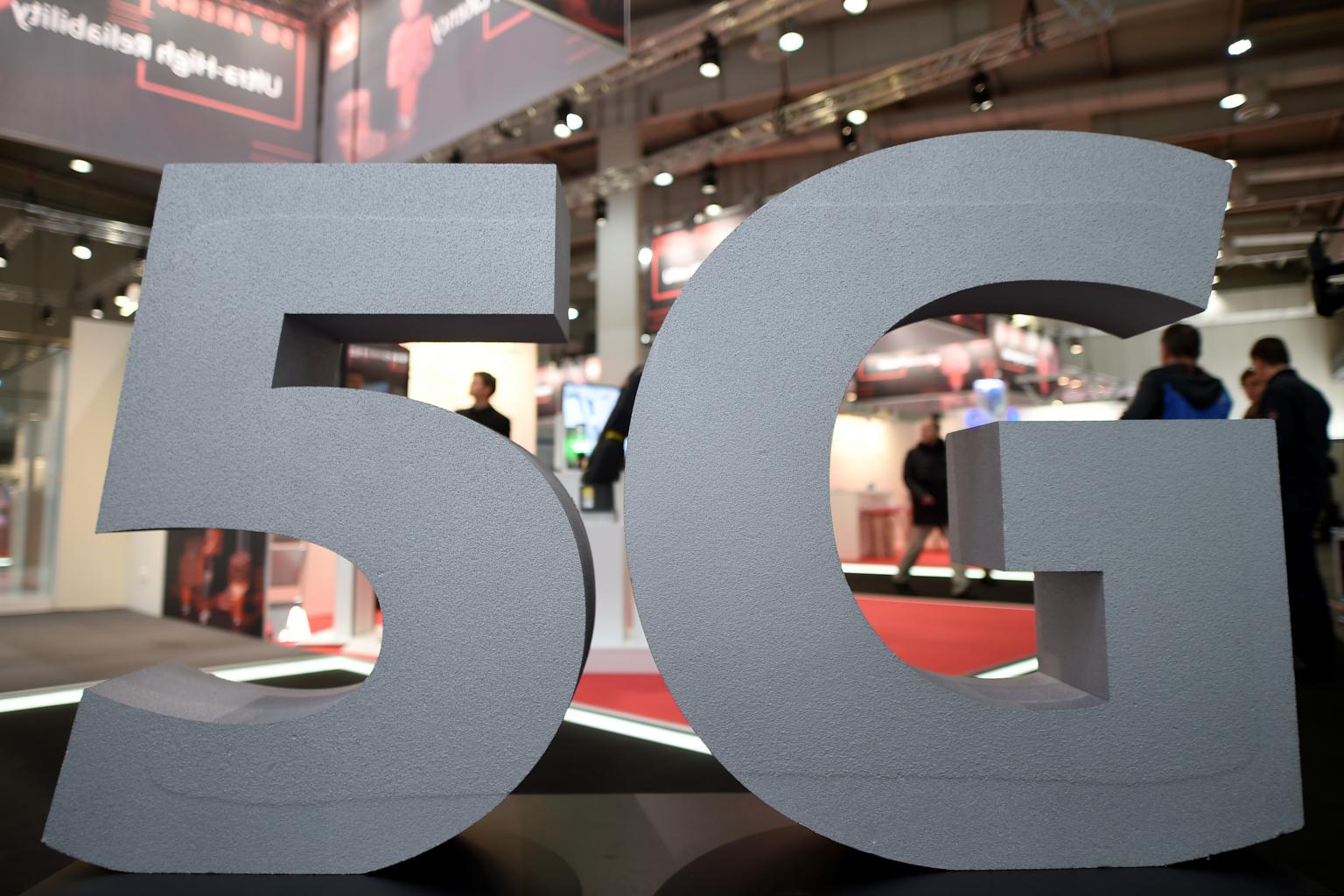5G networks planned for Singapore: What you need to know
Sign up now: Get ST's newsletters delivered to your inbox

A photo taken Oct 10, 2019, showing a logo of the upcoming mobile standard 5G in Germany. Users of 5G handsets moving out of a 5G coverage area will not experience surfing disruption as they will automatically be connected to a 4G connection with the same telco.
PHOTO: REUTERS
Follow topic:
SINGAPORE - Singapore plans to issue licences to operate two full-fledged 5G networks and two smaller ones with limited coverage.
All four networks can be rolled out by next year, although nationwide coverage will take much longer and be limited to only two networks due to the scarcity of 5G airwaves for islandwide reach.
Minister for Communications and Information S. Iswaran announced the decision on Thursday (Oct 17).
Here is a quick guide to the key announcements and reasons.
1. Why is Singapore pushing for four 5g networks instead of two?
The Infocomm Media Development Authority's (IMDA) plans became more aggressive after a two-month-long public consultation earlier this year, during which there were calls for the involvement of all four telcos here - Singtel, StarHub, M1 and TPG Telecom - to spur innovation and competition. IMDA heeded these calls.
As there are limited 5G airwaves for islandwide reach, IMDA cannot allow more than two nationwide networks in Singapore.The alternative is to give out more licences to run smaller 5G networks and more of another type of airwaves - known as millimetre airwaves - to support their roll-out.
This approach will ensure that none of the four telcos, or any innovative ideas, will be missed out.
2. What are the benefits?
The smaller 5G networks will meet immediate industrial needs - for example, in smart ports and factories to remotely operate cranes or vehicles to move shipping containers or goods round the clock.
Millimetre airwaves are in abundance, and 5G networks built using these can be rolled out as quickly as next year.
"They will be useful for consumer applications like virtual reality and augmented reality gaming," said Mr Ramakrishna Maruvada, a regional telecoms analyst at Daiwa Capital Markets. He noted that telcos could monetise these applications first before spending more money to roll out the full-fledged 5G networks.
Plus, the 5G airwaves for islandwide reach (the 3.5Ghz band) will be available only in 2021.
"Singapore is already slower than South Korea, China and the United States, which have launched 5G services using a combination of the far-reaching 3.5Ghz airwaves as well as the millimetre airwaves," said Mr Sachin Mittal, head of telco research at DBS Bank. He expects Singapore to be the first country in South-east Asia to launch 5G services.
3. How is Huawei going to be involved in this exercise?
The two 5G networks with nationwide coverage must be built with the most advanced technologies - called "standalone" 5G technologies - that do not piggyback on existing 4G technologies.
This will give local telcos an opportunity to pick equipment suppliers from scratch to realise the full benefits that 5G networks promise.
Any "lock-in" to existing 4G vendors for a cheap and quick migration to 5G - an advantage that Huawei has over rivals - will not be able to influence telcos' long-term decisions on 5G.
However, 5G networks built to work on the millimetre airwaves are allowed to piggyback on existing 4G technologies at the start until more advanced technologies are available.
Unlike some countries which have banned Huawei over espionage concerns, Singapore has not barred any vendors, but says the systems must meet security requirements.
4. What will my surfing experience be like if only half of Singapore has 5G coverage?
Users of 5G handsets moving out of a 5G coverage area will not experience surfing disruption as they will automatically be connected to a 4G connection with the same telco. Hopping across different telco networks is not possible.

